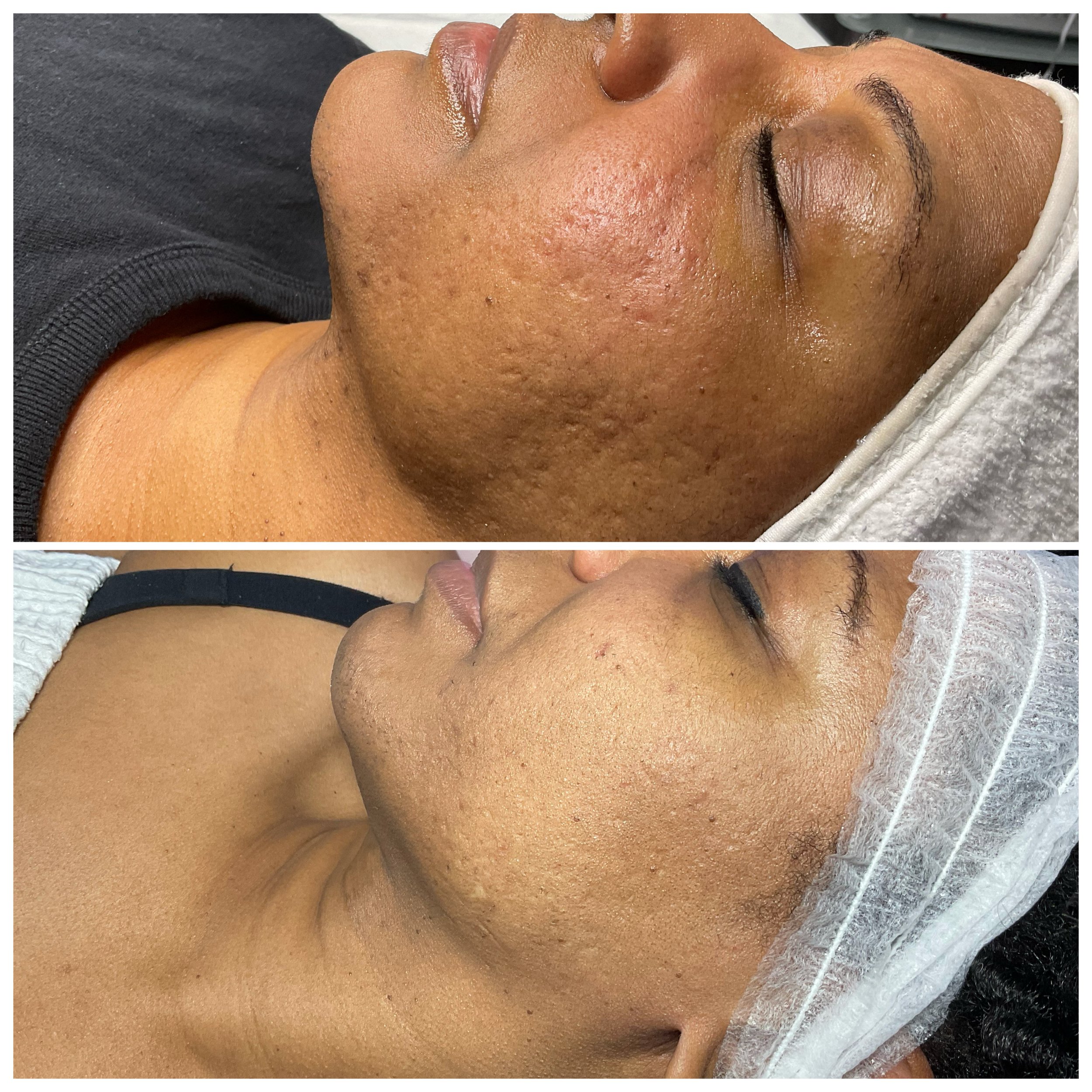4 sessions- 5 month time period
Received 4 chemical peels and purchased all home care
6 sessions
A series of Acne facials and chemical Peels
Chemical Peels
Chemical Peels are designed to exfoliate the skin by applying a chemical solution that promotes the shedding of the outer skin layers. This helps improve the appearance of skin texture, tone, and clarity.
The peeling process itself typically causes visible flaking or shedding of the skin, and it can lead to a temporary darkening (hyperpigmentation) before new skin emerges. This is often the most noticeable during the downtime phase, which typically lasts 5–10 days, depending on the peel's strength and the skin's sensitivity.
Peel Levels (1-3) indicate the depth and strength of the peel:
Level 1: Superficial peels, usually mild, cause minimal irritation or peeling. These are good for beginners or for maintenance.
Level 2: Medium-depth peels can cause more noticeable peeling and downtime. These target more severe skin concerns.
Level 3: Deep peels that penetrate the dermis more effectively. These offer more dramatic results but require more recovery time and can be more intense.
Proper skin prep and a tailored aftercare routine are crucial to minimize complications. This includes avoiding sun exposure, staying hydrated, and using gentle skincare products post-peel.
Click here for full chemical peel aftercare
Microneedling (Collagen induction Therapy)
Microneedling
Microneedling, also known as collagen induction therapy, is a treatment where tiny needles are used to create micro-injuries in the skin, stimulating the body's natural healing process. This process boosts collagen and elastin production, which helps with skin texture, tone, and overall rejuvenation. Here’s a breakdown:
Microneedling works by using a dermaroller or dermapen to create controlled punctures (micro-injuries) in the skin. The idea is to trigger the skin's healing response, which increases collagen and elastin production, promoting smoother and more youthful skin.
During the procedure, a numbing cream is typically applied to reduce discomfort, but some minor pain or discomfort might still be felt, especially if deeper needles are used. It's a minimally invasive procedure, but it requires multiple sessions for optimal results.
Healing time after microneedling can vary depending on the depth of the treatment, but typically, the skin looks red and slightly irritated, similar to a mild sunburn, for 24-48 hours. In some cases, there might be slight peeling or dryness, but the skin generally heals quickly.
Microneedling levels range in depth and intensity:
Shallow microneedling (0.25mm to 0.5mm): Ideal for improving skin texture, fine lines, and superficial scars. It’s generally a quick recovery with minimal downtime.
Medium-depth microneedling (0.75mm to 1.5mm): Helps with more significant texture issues, enlarged pores, and deeper scars.
Deep microneedling (1.5mm and beyond): Used for more severe concerns like deep acne scars, stretch marks, or significant skin laxity. This level requires more downtime and careful aftercare.
Aftercare is key! Post-treatment, your skin is more sensitive and susceptible to irritation. This means avoiding direct sun exposure, heavy skincare products, and makeup for a few days. Hydrating and nourishing your skin will help with the recovery process.



